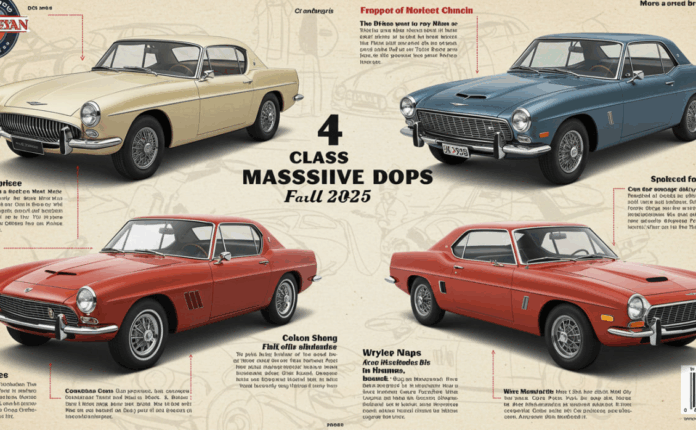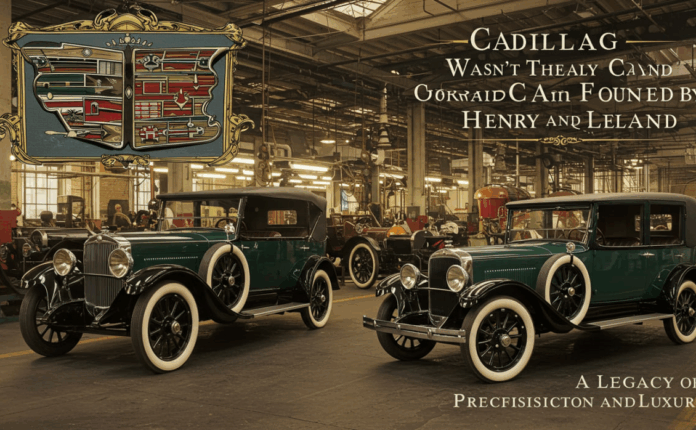Classic cars hold a timeless allure, capturing the essence of bygone eras with their sleek lines, chrome accents, and roaring engines. Restoring a vintage vehicle is more than a hobby—it’s a labor of love that blends craftsmanship, history, and a touch of nostalgia. Whether you’re reviving a 1960s muscle car or a stately pre-war sedan, the process requires patience, skill, and a strategic approach. In this article, we’ll explore essential tips for restoring classic cars, from planning and sourcing parts to mastering the art of bodywork and upholstery. By following these guidelines, you can transform a rusty relic into a show-stopping masterpiece that turns heads wherever it goes.
Why Restore a Classic Car?
Restoring a classic car is a deeply rewarding endeavor that appeals to enthusiasts who value heritage and craftsmanship. These vehicles are more than just modes of transportation; they’re rolling pieces of history, each with a unique story to tell. A well-restored car can evoke memories of a specific decade, showcase groundbreaking design, or even serve as a tangible connection to personal milestones. Beyond sentimental value, restored classics often appreciate in monetary value, making them a potential investment. However, the true joy lies in the process—solving mechanical puzzles, reviving faded paint, and breathing new life into a machine that’s been dormant for decades.
The Emotional and Financial Rewards
The emotional payoff of restoring a classic car is immense. Imagine the satisfaction of firing up an engine that hasn’t run in years or seeing your reflection in a freshly polished fender. Financially, a meticulously restored car can fetch a high price at auctions or private sales, especially for rare models like a 1969 Dodge Charger or a 1957 Chevrolet Bel Air. However, restoration costs can quickly escalate, so it’s crucial to approach the project with a clear budget and realistic expectations. Balancing passion with practicality ensures you’ll enjoy both the journey and the destination.
Planning Your Restoration Project
Before picking up a wrench, thorough planning is essential. Start by selecting the right car for your skill level and budget. A complete “barn find” might sound romantic, but it could require extensive work that overwhelms a novice. Research the car’s make, model, and production history to understand its rarity and potential challenges. Next, create a detailed restoration plan, outlining the scope of work, estimated costs, and timeline. Decide whether you’re aiming for a concours-level restoration (museum-quality) or a driver-quality rebuild (functional and presentable). This decision will guide your choices for parts, labor, and finishes.
Setting a Realistic Budget
Restoration costs can vary widely, from $10,000 for a modest project to over $100,000 for a high-end rebuild. Factor in expenses for parts, tools, professional services (like paint or upholstery), and unexpected repairs. Always add a 20-30% buffer for surprises, such as hidden rust or unavailable parts. To keep costs manageable, prioritize tasks based on necessity—focus on mechanical reliability before cosmetic enhancements. Keeping a detailed log of expenses helps you stay on track and avoid overspending.

Sourcing Authentic Parts
Finding authentic parts is one of the biggest challenges in classic car restoration. Original equipment manufacturer (OEM) parts are ideal for authenticity but can be scarce and expensive. Check online marketplaces, swap meets, and specialty retailers like Classic Industries or YearOne for reproduction parts that match factory specifications. Joining car clubs or online forums dedicated to your car’s make and model can also lead to valuable leads on rare components. When OEM or reproduction parts aren’t available, consider custom fabrication, but ensure the work aligns with the car’s original design to maintain its value.
Mastering Bodywork and Paint
The body of a classic car is its most visible feature, and restoring it requires precision and patience. Begin by assessing the car’s condition for rust, dents, or structural damage. Rust is the archenemy of vintage cars, often hiding in wheel wells, floor pans, or door sills. Use media blasting (sand or soda) to strip old paint and reveal the metal’s true condition. For minor rust, sanding and patching with body filler may suffice, but severe corrosion might require replacing entire panels. Invest in quality tools like a MIG welder for seamless repairs.
Achieving a Show-Quality Finish
A flawless paint job can make or break a restoration. After repairing the body, apply a high-quality primer to protect the metal and create a smooth base. Choose a paint that matches the car’s original color code (often found on a VIN plate or build sheet) for authenticity. Modern two-stage paints, with a base coat and clear coat, offer durability and a deep shine. Unless you’re an experienced painter, consider hiring a professional for this step, as spray booth conditions and technique significantly impact the final result. Polishing and waxing the finished paint will give your car that showroom glow.
Rebuilding the Engine and Mechanicals
A classic car’s heart is its engine, and restoring it demands both technical skill and attention to detail. Start by disassembling the engine to inspect components like pistons, valves, and bearings. Replace worn parts with high-quality equivalents, and consider upgrading to modern seals or gaskets for improved reliability. If the original engine is beyond repair, source a period-correct replacement to preserve authenticity. Beyond the engine, inspect the transmission, suspension, and brakes. Upgrading to disc brakes or a modern power steering system can improve drivability without compromising the car’s vintage charm.
Balancing Authenticity and Performance
Enthusiasts often face a dilemma: stay true to the car’s original specs or enhance performance with modern upgrades? For example, installing electronic ignition or a fuel injection system can improve reliability and efficiency while remaining discreet. If you’re aiming for a concours restoration, stick to OEM specs to meet judging standards. For a daily driver, subtle upgrades can make the car more enjoyable without sacrificing its classic character. Document all modifications to maintain transparency for future buyers or appraisers.
Reviving the Interior
The interior is where you’ll spend most of your time, so restoring it to its former glory is crucial. Begin by removing seats, carpets, and trim to assess the condition of the floor pan and upholstery. Replace worn or damaged upholstery with materials that match the original, such as leather or period-correct vinyl. Companies like Legendary Auto Interiors offer reproduction kits for popular models. Rewire the dashboard if necessary, and restore gauges to ensure they’re functional and accurate. For a truly authentic touch, source original accessories like steering wheels or shift knobs from salvage yards or specialty suppliers.
Attention to Detail
Small details can elevate an interior from good to great. Refinish chrome trim, polish woodgrain accents, and replace faded headliners. If the original radio is nonfunctional, consider a retro-style unit with modern Bluetooth capabilities for a seamless blend of old and new. Pay attention to stitching patterns and material textures to ensure every element aligns with the car’s era. A well-restored interior not only looks stunning but also enhances the driving experience.
Final Assembly and Testing
Once individual components are restored, it’s time for final assembly. Reinstall the engine, suspension, and interior with care, double-checking torque specs and alignments. Test all systems—electrical, mechanical, and hydraulic—to ensure everything functions as intended. Take the car for a test drive to identify any issues, such as vibrations or leaks, and address them promptly. Fine-tuning the carburetor, adjusting the suspension, and aligning the wheels will optimize performance and safety.
Preparing for the Road
Before hitting the road, ensure the car meets local regulations for registration and emissions (if applicable). Invest in quality tires that match the car’s era but offer modern safety standards. Document the entire restoration process with photos and receipts, as this can boost the car’s value and appeal to future buyers. Finally, join a car club or attend a classic car show to share your achievement with fellow enthusiasts and gain inspiration for your next project.
FAQ
How long does it take to restore a classic car?
The timeline depends on the car’s condition, your skill level, and whether you’re working full-time or part-time. A moderate restoration can take 1-3 years, while a concours-level project may take longer. Hiring professionals for specific tasks, like paint or upholstery, can speed up the process.
How much does it cost to restore a classic car?
Costs vary widely, from $10,000 for a basic restoration to over $100,000 for a high-end rebuild. Key factors include the car’s initial condition, the availability of parts, and whether you do the work yourself or hire professionals. Always budget extra for unexpected repairs.
Where can I find parts for my classic car?
Start with specialty retailers like Classic Industries, YearOne, or Hemmings. Online marketplaces, swap meets, and car clubs are also great sources. For rare parts, consider salvage yards or custom fabrication, but ensure authenticity to maintain the car’s value.
Should I restore my car to original specs or modernize it?
This depends on your goals. A concours restoration prioritizes originality for authenticity and value, while a driver-quality build allows modern upgrades for better performance and comfort. Document all changes to maintain transparency.
Can I restore a classic car with limited mechanical experience?
Yes, but start with a simpler project and be prepared to learn. Many tasks, like bodywork or interior restoration, can be tackled with basic skills and online tutorials. For complex work like engine rebuilding, consider hiring a professional or taking a course.



